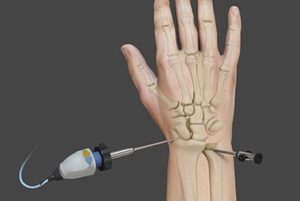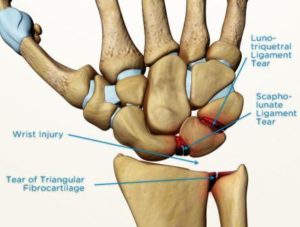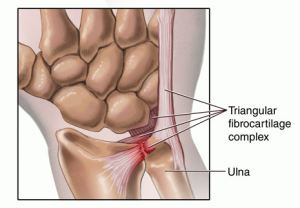Dr Gautam Tawari is an accredited orthopedic sports surgeon from The Royal College of Surgeon in the UK. He has a Diploma in Sports & exercises Medicine (Dip.SEM) from the college and is a Fellow of the Sports & Exercise Medicine Society of the UK.
He is a fellowship trained Orthopedic Hand & Wrist Surgeon from the UK & has worked as a Consultant Orthopaedic Surgeon in the UK. He specialises in advanced wrist surgery and Sports related injuries to the wrist, including Wrist Arthroscopy.
The common sports related injuries he treats surgically include – scaphoid fractures and Scaphoid Non union, TFCC ligament repairs, Scapholunate (S-L) ligament repairs and Scapholunate Ligament Reconstruction, Wrist Ganglions and Endocopic Carpal Tunnel Release.
Wrist arthroscopy is a minimally invasive surgical procedure performed to view, diagnose, and treat problems of the wrist joint.
Indications
Wrist arthroscopy may be necessary to help in diagnosing and treating these conditions:
- stiffness
- unexplained/ chronic wrist pain
- swelling
- instability
- arthritis
- wrist fractures / trauma
- ligament tears
- ganglion cysts

Surgical procedure
Wrist arthroscopy is performed as a day surgery where patients are able to go home within several hours after their surgery. It is usually performed under regional or general anesthesia. One or two small half-inch incisions, known as portals, are made on the back of your wrist. The portals are placed in specific locations on the wrist, depending on the areas that need to be visualized.
The arthroscope and special surgical instruments are inserted into the wrist through these portals. Guided by the images relayed from the arthroscope, any necessary repairs depending on the particular problem is performed.
Advantages
Recovery following wrist arthroscopy is generally more comfortable for the patient than an open surgery which requires a larger incision. There is usually less pain following the procedure and the healing time is faster when compared to an open procedure.

The scapholunate (SL) ligament connects two of the small carpal bones together, the scaphoid and lunate. These are located near the center of the wrist. The SL ligament ensures the bones move in unison and the wrist has a smooth rotation.
When it is ruptured, the bones separate in different directions, resulting in a painful loss of grip strength. This injury to the wrist is not uncommon and is often sustained by athletes.
Presentation
- Pain in wrist on thumb side
- Swelling
- Bruising
- Weak grip
- Snapping or popping in wrist
Treatment
Non-surgical treatment includes use of Splint or cast and anti-inflammatory medication.
Surgery for SL tears is often done arthroscopically using small incisions to repair the torn ligament. In severe SL tears, the ligament is repaired by sutures that are anchored into the bone. In chronic tears, the bones are realigned and ligament reconstructed. Recovery requires 6 weeks in a cast or splint and hand physiotherapy to regain function.
The triangular fibrocartilage complex (TFCC) is a cartilage structure located on the ulnar side of the wrist. It provides cushion and support to the small carpal bones in the wrist. It also play a major role to keep the forearm bones (radius and ulna) stable when the hand grasps or the forearm rotates. An injury or tear to the TFCC cause wrist pain and is often difficult to diagnose.
Types of Tears
Type 1 tears are traumatic tears and are associated with fall on an outstretched hand and/or excessive arm rotation.
Type 2 tears are degenerative tears. They occur over time due to ageing of the complex (wear & tear). Some inflammatory disorders, such as rheumatoid arthritis, gout can also result in these tears.

Presentation
- Pain around the wrist ongoing for a long period of time.
- Swelling in the wrist
- Painful clicking in the wrist
- Loss of grip strength
- Athletes involved in racquet sports, cricketer especially batsman or golfers often have this injury.
- Degenerative tears are more common in people over 50.
Treatment
Non-surgical treatment includes use of Splints or cast. Anti-inflammatory medication, Cortisone injection.
Surgical treatment is needed for tears that don’t respond to the conservative treatment or are traumatic. This can be performed via arthroscope (Keyhole). Recovery is 4 weeks in a cast or splint followed by hand therapy to get the wrist back to full function.